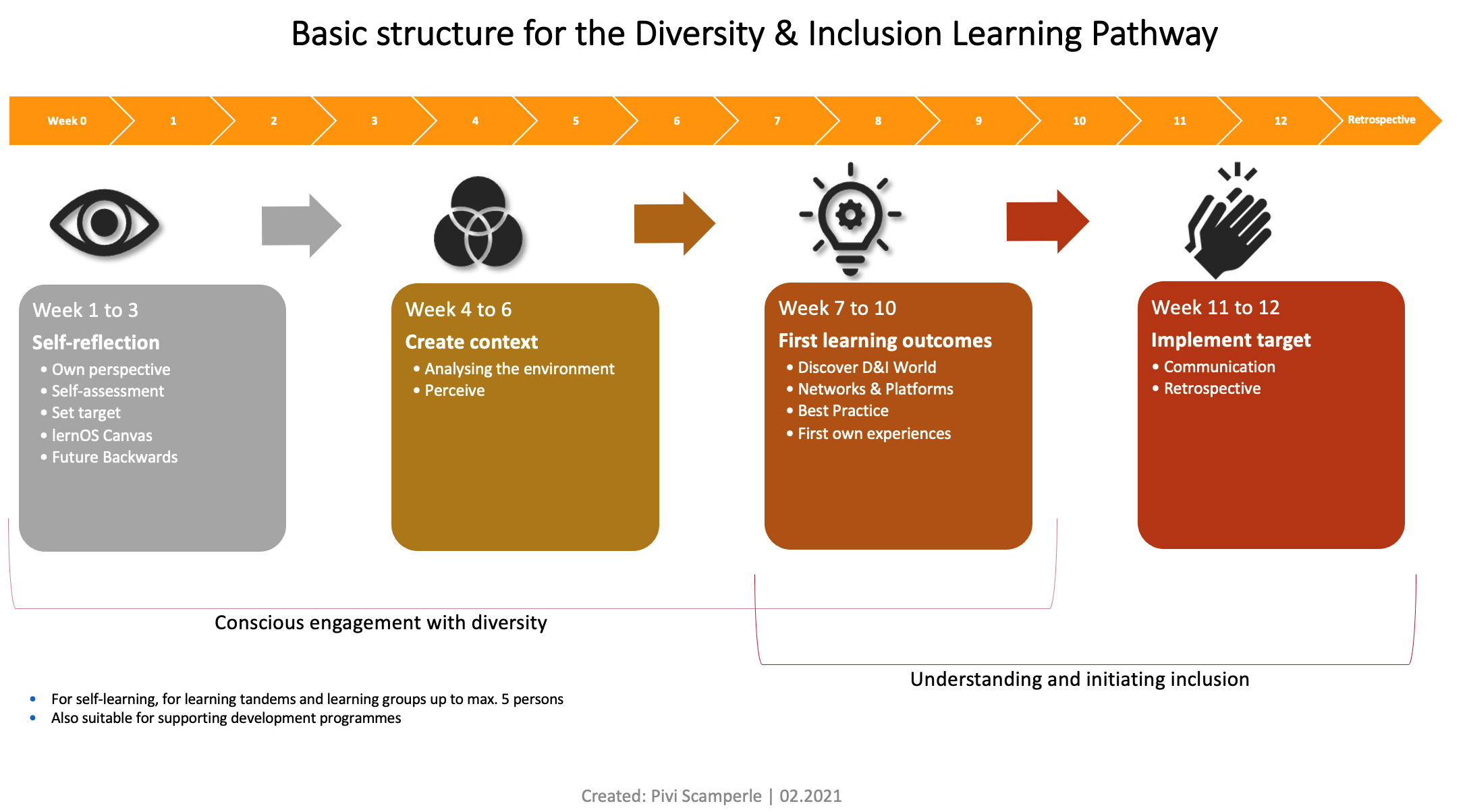Basics
The verb \"lernos\" is the future tense of \"learn\" in Esperanto (mi lernos = I will learn, ni lernos = we will learn). lernOS is an operating system for lifelong learning and learning organisations. lernOS is not software, however, but \"brainware\". It is a way of thinking and acting to be successful as an individual, team or organisation in the 21st century. The capitalised \"OS\" in the name underlines the importance of digitalisation for our networked knowledge society.
There are three basic guides to lernOS that describe the approach at the individual level (lernOS for you), at the team level (lernOS for teams) and at the organisational level (lernOS for organisations). In addition, there is the lernOS toolbox, which explains frequently used methods and tools (e.g. podcast, barcamp1, sketchnoting2, expert debriefing3). lernOS was not created on the proverbial green field but is a compilation of already existing and proven methods. All lernOS guides are available under the open licence Creative Commons Attribution (CC BY)^4^ on the lernOS website and may be adapted to your own needs.
If you have further questions regarding lernOS or need support from like-minded people, you can use the community platform CONNECT or write under #lernOS on Twitter. Note: Mastery in lernOS is a matter of months or years, not hours or days.
So: Keep Calm & Learn On!
Introduction
This lernOS guide deals with the topic of Diversity & Inclusion. Diversity describes the similarities and differences between people. Inclusion, on the other hand, refers to the appreciative handling of diversity. It is not to be confused with INCLUSION, a word that is mostly used in German-speaking countries in connection with the topic of \"disability\". Start looking for your definition. You should especially take a look at the broad approach to diversity of the Diversity Charter: https://www.charta-der-vielfalt.de/
A few more comments up front:
This lernOS Diversity & Inclusion refers to Germany with its contents, links and references. When adapting for other countries and translating into other languages, you should take this into account and make the appropriate adjustments.
It is aimed at both individuals and groups of up to 5 people. For the sake of simplicity, we have used the \"you\" form of address throughout. We only deviate from this where it is exclusively a matter of group explanations. Of course, we use gender-neutral language or the gender star. We want to use the gender star to designate all genders - even beyond the binary identity. The star figuratively expresses the multitude of possible genders through its rays. More information on gender-equitable language is also available here: https://fairlanguage.com/
The learning journey at a glance
In the next 13 weeks you will go on a learning journey. You don\'t start at week 1, but at week 0. You choose your goal yourself, but the learning path always navigates you along the right (content-related) path. In the process, you will acquire basic knowledge and receive advice on useful sources as well as exercises that will help you to achieve your goal in terms of diversity & inclusion.
To do this, you first take stock: self-reflection - weeks 0 to 3. Where do you start with the topic? First you find your goal and learn how to formulate it. Then you determine the right starting point for you. Here it is especially important that you name your learning goal clearly and do not get lost in the whole breadth of the topic of diversity.
During weeks 4 to 6 you establish the status quo in your environment so that you can contextualise your goal and learning journey. Diversity & Inclusion is a broad and multi-layered topic, it does not work in a one-size-fits-all way. That is why the context in which you move, set and pursue your learning goal is so important. If you have done this well, then you can look at all facets of Diversity & Inclusion and always find your way back to your learning path. Because in the following three weeks you will move forward on your learning journey. You will learn methods that will help you to internalise the topic in relation to your goal. And you will also learn what could slow you down or distract you along the way.
In weeks 7 to 9, the learning path will help you become competent in the topic, deepen your competence in diversity and generate real learning experiences. And then it\'s time for the final spurt - in weeks 10 to 12 you will apply and try out what you have learned in the weeks before.
You should plan at least 2 hours per week. There are always tips if you want to do more. Preparation and follow-up times can vary. And don\'t worry that it might be too much for you! You can always take a break. You can also adjust your learning goal, go deeper into the topic or exchange ideas with others (or in your group). If you are not motivated or feel overwhelmed, that\'s okay. Don\'t despair! Your learning journey is not always linear, every now and then there is a stop or the journey is slower than planned, turns off somewhere or just wants to pause for a moment. All that is fine, don\'t forget that. And now: have fun on your journey!

Schematic representation of the structure of the learning path.